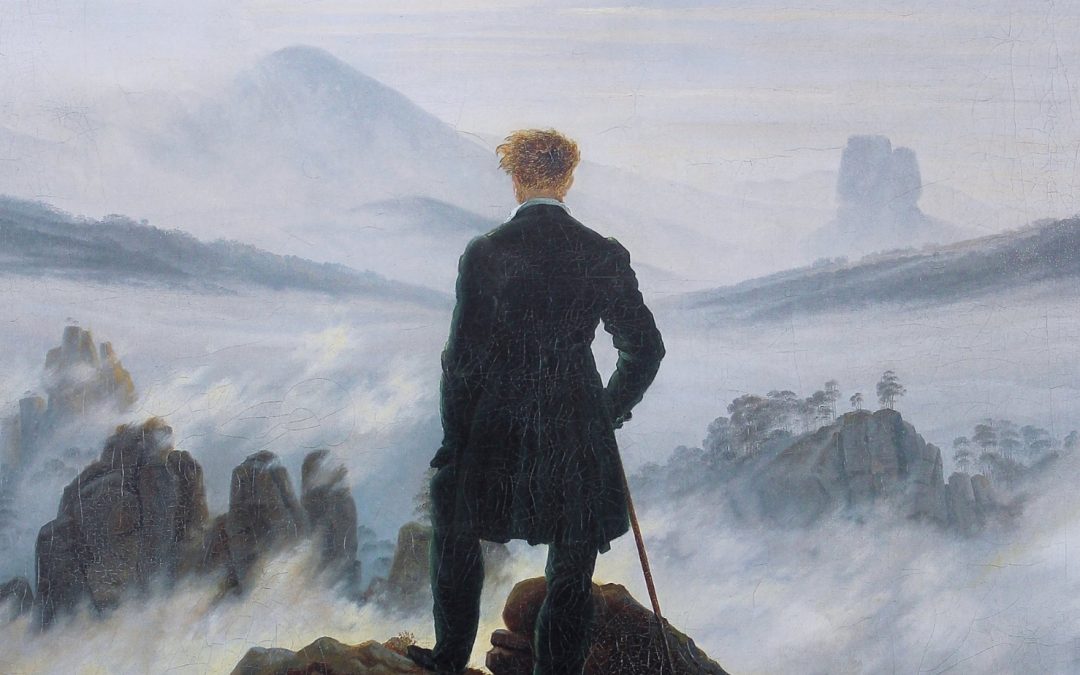The 1800s were an incredibly formative century. Huge social change, the abolishment of slavery, the industrial revolution and the early stages of urbanization expanding throughout the developed world. The world of Art was no different.
As the structure of society changed, art adapted and changed with it. Movements bounced off each other, sometimes embracing, sometimes rejecting the ever-evolving developments of the art of the time. One such movement was Symbolism, evolving as a rejection of Realism; it established itself by the late 19th century in the Salons of France. Let’s take a deeper look at what inspired the leading figures at the time.
Early beginnings in literature
Symbolism started as the literary movement in Western culture in the 19th century. It countered materialism and rationalism that was dominant in that period. We can trace its birth to 1886 when the influential Symbolism Manifesto was written by French writer Jean Moreas. He felt that reality should be represented with symbols, rather than being replicated. This idea was quickly accepted by young visual artists, evolving symbolism from literature to painting. This art movement provided endless possibilities for artists that created various techniques and art styles with an emphasis on imagination and emotions. Although the basis for Symbolism as an art movement was created in the 1870s, its first interpretation was given by Albert Aurier in 1891, who published an article about Paul Gauguin. He described it as the subjective perspective of an artist conveyed through a non-naturalistic and simplified style.
The raft of Medusa as told by Great Art Explained
Return to Romanticism and Mythology
Symbolism possessed emotional qualities of self-reflection and mystical tendencies that were present in Romanticism of the early 19th century. Artists of symbolism had very diverse subjects that inspired them. Predominantly, those were themes like love, sex, desire as well as fear, death, anguish. Visual artists often conveyed dreams and mythological themes, creating worlds full of enigmatic figures from Greek mythology and biblical stories. Women also served as a great inspiration appearing in the form of femmes fatales and dreamy virgins. Instead of the boring reality of realism, Symbolism was inspired more by emotions and feelings that an artist kept in his heart. It was their escape from reality, everyday life, an expression of their personal visions and fantasy that they eternalized on their canvas. Works of art in Symbolism are illustrated with unaltered colours, abstract shapes, and immense brushwork.
From early influences to Gauguin
Paul Gauguin is recognized as an important figure of Symbolism, who left a big trace on this art movement and was influential to other artists as well. However, the fundaments of Symbolism were laid in the 1870s by early artists like Gustave Moreau, Odilon Redon and Puvis de Chavannes, etc. who influenced the 1880s artists greatly, including Gauguin. Their influence shaped the course of his art style, which lead to his first Symbolist painting “Vision of a Sermon” portraying biblical theme combined with abstracted form. His Symbolism was special and different from his predecessors as he tried to find a way to escape from civilization and industrialization to less civilized parts of the world rather than to his imaginary world.
France to the world
Although Symbolism began in France, during the 1880s and 1890s this art movement quickly spread across Europe and the world. Thanks to the foundation of the Salon de la Rose + Croix by Joséphin Péladan, Symbolism expanded from France to Netherlands and Belgium, with artists like Jan Toorop and Fernand Khnopff. Norwegian artist Edvard Munch spent some time in Paris where he connected with Symbolist circles, before moving to Germany. His art style was more focused on themes such as loneliness, illness, despair, the anxiety of modern existence. He was the author of the famous painting “The Scream”, made in 1893, which depicts anguish, feeling of isolation, disillusionment.
The influence of the movement continued with the secessionists with the most famous being Austrian painter Gustav Klimt who developed his art style in central Europe, portraying his obsession with both the productive and destructive strength of female sexuality. This fascination can be seen through his artworks like “Judith I”, “Salome” and “The Kiss”.
Overall, the Symbolist movement was in part, a rejection of Realism that sought to escape the real world. Using dreams and emotions as inspiration, this subjective view of the world through the artist’s lenses, was responsible for the works of many great 19th century artists and laid the foundation for many modern art movements of the 20th century.
To find out more about the Symbolism movement, check out this Youtube Video below by Rocio Quijada…





